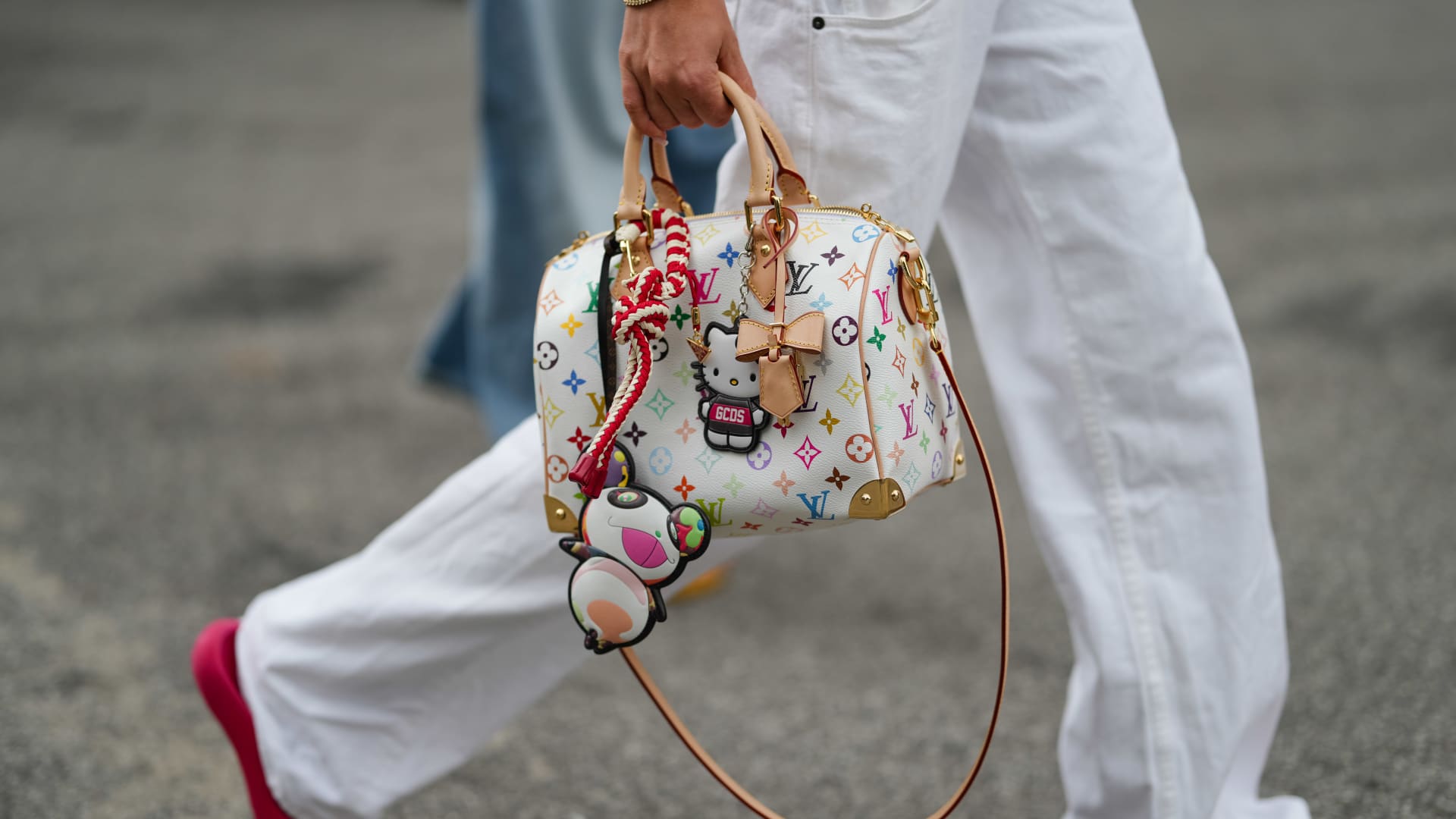Luxury brands bet on $160 lipsticks and $1,400 accessories to combat industry slump
With nearly all shoppers facing a sense of sticker price shock, some luxury fashion lines are experimenting with new, less pricey products in a bid to remain relevant and attract new consumers.
Louis Vuitton’s long-awaited beauty collection hit branded stores and concessions last month, marking the latest iteration for the 171-year-old LVMH-owned luxury titan.
And while the signature scented lipsticks don’t come cheap at $160 a pop, it indicates a wider shift among luxury players trying to get more shoppers through the door without diluting their flagship offerings.
“I think this is a very appropriate move,” Luca Solca, sector head for global luxury goods at Bernstein, who has extensively studied diversification of luxury brands, told CNBC via email.
“Mega-brands would be wise not to sell too many of their core products and use lower absolute price categories to engage with a broader [range of] aspirational consumers,” he noted.
With esteemed makeup artist Pat McGrath as creative director, Louis Vuitton may be hoping that the range of 55 lipsticks, 10 lip balms and eight eyeshadow palettes — and an accompanying $2,890 mini trunk carry case — will appeal to her cult following of young, U.S. consumers.
It follows similar expansions into cosmetics by brands such as Prada, LVMH’s Celine, Dries Van Noten and, soon, Miu Miu. “Beauty is an attractive category from a financial viewpoint, as it offers high GM% [gross margins],” Bernstein said in a note in March.
Meanwhile, the explosive popularity of Labubu keychains has birthed a new wave of extravagant bag charms, including from Coach, Longchamp and a $1,420 option from Louis Vuitton, as brands bet that the “treatonomics” trend will tempt shoppers to splurge on little luxuries even as they cut back on bigger ticket items.
The luxury diversification comes as the sector grapples with an industry-wide slowdown, U.S. tariffs, and wider cost pressures.
“Brands are utilizing the playbook from 2015, 2016,” Jelena Sokolova, senior equity analyst at Morningstar, said via email, referring to another period of softness in the industry, amid a dip in Chinese demand.
“Back then, brands turned to streetwear, e.g. sneakers, smaller handbags and bag charms,” she said. “Those efforts have proved quite successful in the past with growing share of millennial consumer buying, supported by a general pick-up in sentiment.”
Growing the luxury market
This time around, the luxury industry has been under pressure since 2022, when a Covid-era boom gave way to malaise as consumers grew weary of steep — and often what they deemed unmerited — price increases.
Bank of America Securities said in a 2022 report that the sector’s revenue and growth going forward would be determined by three factors: doubling the total addressable market (TAM) including with new products; increasing cultural relevance; and ongoing brand reinvestment to increase desirability.
“New categories grow the TAM and increase cultural relevance,” Ashley Wallace, managing director, European consumer discretionary at Bank of America Securities, and one of the report’s authors, told CNBC via email.
Other examples of new luxury categories include footwear, eyewear, perfume and small leather goods.
Lower price entry points can, in turn, bring a younger and broader consumer base into a brand’s ecosystem, with the hope that shoppers will then develop a sense of brand loyalty over time.
“Younger customers have become increasingly engaged with luxury supported by cultural relevance, online engagement and advertising. As these customers move up the income ladder, accumulate more assets and intergenerational transfer of wealth continues, this younger generation will control a greater share of global wealth and consumption power therefore underpinning the structural tailwind of luxury demand,” BofA Securities said in the report.
LVMH’s Chief Financial Officer Cecile Cabanis acknowledged that strategy during the French luxury conglomerate’s second quarter earnings call in July.
“You also need to connect with the younger generation,” she told investors. “You also need to have some offer where you can meet them, onboard them and then they can go through your value ladder.”
“We refuse to do that with cheap bags. The way we do it is Vuitton. Vuitton is always the best desirability, always the best quality. So you use accessible product categories in order to do it: perfume, small leather goods, and there are a few others. That’s really how we work on [the] portfolio,” she said.
Striking a balance
But brands have a fine balance to strike in broadening their appeal without diluting the exclusivity of their labels.
Sokolova said that the push into new, lower price categories ought to be done alongside the expansion of a brand’s more expensive product offerings, to ensure it continues to cater to more affluent consumers.
Some brands have learnt that lesson the hard way. Heavy discounting from the likes of Burberry and Gucci in the past has left them struggling to regain their status among high spenders.
Whether brands’ latest phase of category diversification will prove successful in the current era of economic pressures and compressed consumer spending still remains to be seen, however.
“It was successful 10 years ago. So far, it’s [too] early to say,” Sokolova said.
“Any brand has to establish itself with the new generation of consumers, otherwise its appeal will age together with the current buyers. [But] ultimately, aspirational consumers are more economically sensitive so stronger economy is needed for them to sustainably grow purchases.”





Leave a Reply